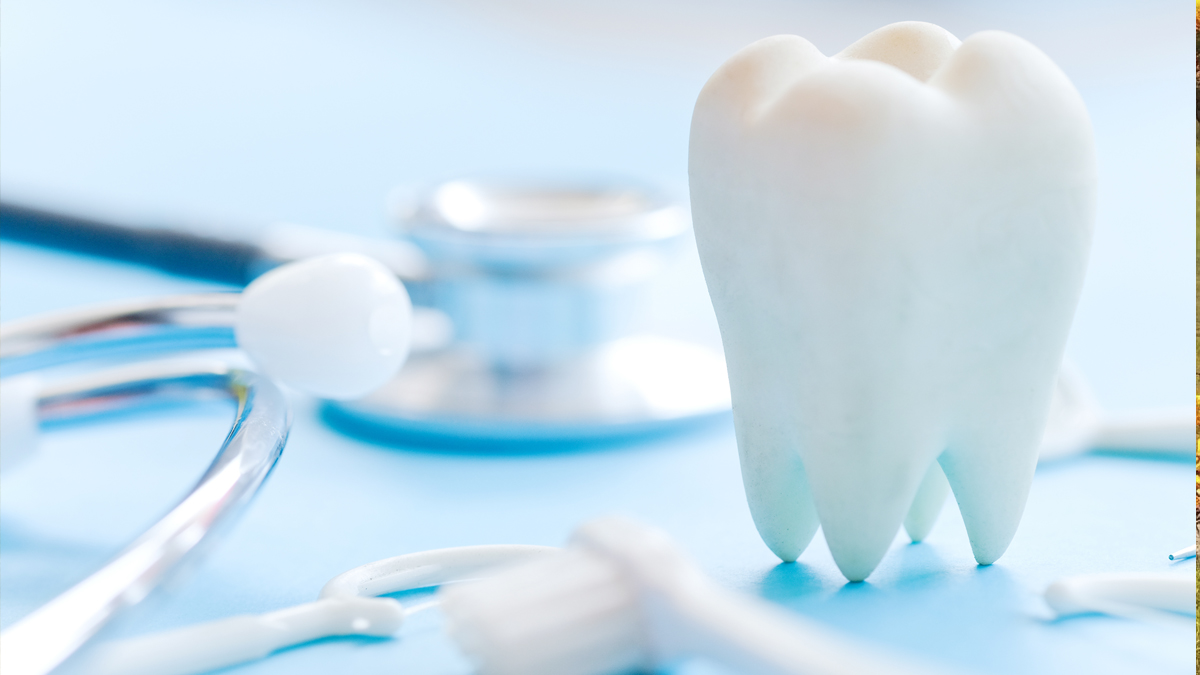Sometime after he turned 45, Louie Lewis of Taylors, South Carolina, went to see the dentist. He had been going since age 4, but this day would be a new experience.
“I was expecting the same dental routine I had known since 1965: plaque scraping with a pointed metal object, teeth cleaning with a whirring rubber toothbrush contraption overhead and rinsing it all with cold water into a large white spit bowl next to the dental chair,” he said.
But on this visit, the bowl and whirring contraption were gone. In their place were an instrument that shot warm water into his mouth during the scraping and cleaning, tube suction that took it away and what seemed to be a self-powered brush that gave his teeth a final polish.
“I never had to spit anything out,” Lewis said. “When it was over, I told the doc that all the new ways were far better than the old ones.”
In a few years, a dental visit might seem light years from anything Lewis has known so far; current technology is not only allowing people to keep their original teeth to age 100 but hovering at the edge of total tooth regeneration.
“We understand the health implications of dental issues so much better now, and it’s so important to educate people on this and get them invested in their health,” said Dr. Ivy White, a partner with her dad, Dr. Eddie White, at Sewee Dental Care in Mount Pleasant. “A huge focus of dental school currently is in better understanding the link between dental health and overall health.”
Part of that link lies in both new and time-honored advancements, including:
• Digital dentistry – Drs. Eddie and Ivy White said that digital dentistry is so far the biggest technological innovation of the 21st century. It’s something Ivy learned in school but which in the 1980s wasn’t part of her dad’s training. What makes it special is the use of computer-based or digital components to further enhance patient care.
For example, suppose you had come to Dr. Eddie White in 1986, right after he graduated from the Medical University of South Carolina, for concern about a tooth treatment. He would have most likely put a gooey substance in a mouthguard and had you bite down in the right place until it hardened. Then he would have sent the mold to a lab for a dental technician to create whatever device you needed to repair, replace or better align your teeth.
“The entire process was time-consuming and very uncomfortable for the patient, despite my efforts to make it as pleasant as possible,” he recalled.
But if you visit him or his daughter now for the same concern, they use an intraoral scanning and CAD/CAM device to make a 3D digital image of your mouth for analysis and treatment.
“Which is much faster with no patient discomfort,” Dr. Eddie White said. “We are able to integrate different imaging and delivery care based on more information, which is better both for patient understanding and for our decision-making.”
• Power brushing – Electric toothbrushes have been around since 1960, when a company called Squibb marketed the first American model – Broxodent – which rotated from side to side.
Today’s models, such as Sonicare and Oral-B, can rotate fully and operate similarly to the whirring device dentists use for regular cleanings.
Dr. Lisa Creaven, dentist and founder of Made By Dentists, a professional oral care products company, said power brushes have an advantage over manual ones because their rotation “essentially forces the toothpaste in more difficult-to-reach areas, which is where cavities start.”
“And using an electric toothbrush can be much smoother on gums, causing less erosion on your teeth,” she added.
• Brushing, flossing and gargling – While this dental trinity has been around seemingly forever, it is oddly the one area where dentists struggle as much now as they did at any time in the past.
“People still have a hard time figuring that you still have to brush and floss,” said Dr. Eddie White. “All the dentistry in the world won’t last if patients don’t understand how to keep everything clean.”
Yet even hard-to-convince patients might have a future ace going for them: regenerative dentistry.
This next wave of dental progress utilizes tissue-derived stem cells, bioactive molecules and scaffolds – which means that if you have any bad teeth, dentists will not only be able to repair them but also regenerate tooth structures, potentially making fillings and other invasive procedures a thing of the past.
Regeneration also will allow for bone augmentation – more bone mass around the tooth area – nerve regeneration for injuries in the orofacial region and salivary gland regeneration for the secretion of saliva.
So on your next dental visit, don’t be surprised if, like Lewis, you have a whole new experience and come away smiling more than ever before.
“Dentistry is always evolving and can be hard to keep up with,” Dr. Ivy White said. “But the basics are always the same: treating people well, providing excellent comprehensive care and empowering patients with information so they can trust the process and feel good about coming to the dentist.”
By L. C. Leach III







